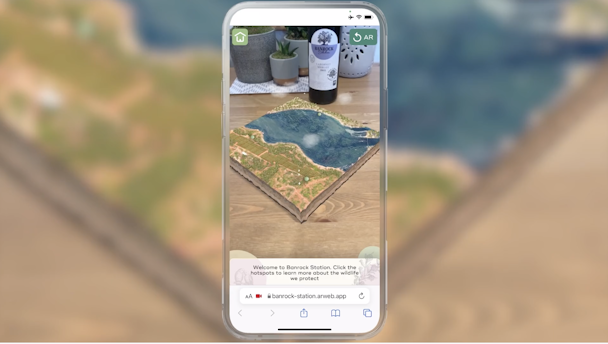How to integrate augmented reality into your marketing strategy
Incorporating augmented reality (AR) into brand strategy isn't for the faint-hearted. Dave Mather of Zappar breaks down key considerations for AR-curious marketers.

Where your audience 'lives' will determine the appropriate AR channel for your brand / Image courtesy of Zappar
Augmented reality (AR) is scientifically proven to be more visually engaging and memorable, and to elicit an emotional response in users – outcomes that every marketer cares about. But for many, it still feels like a nascent technology that's hard to wield and compare against more traditional channels.
For marketers looking to integrate AR into their marketing, here are a few pointers to help you deliver more impactful campaigns, and showcase its value back to your business and clients.
Start with a clearly defined brief
Before using AR in your marketing, start with a clearly defined brief. If you don’t have a well-defined reason for using AR to achieve your strategic objectives, then don’t use it – use email, paid social, video or another channel you’re more familiar with instead.
Make sure you can clearly communicate your brief and associated objectives to the wider business, so you can bring them on the journey with you.
Think about where your audience is
As part of your brief, make sure that your target audience will be receptive to the technology, that they know how to use it, and that they have access to WiFi or 4G/5G.
Create surveys, carry out user testing, and make sure AR will add value to your audience beyond what you're already doing in your marketing. Think about where most of your audience is; this will help to inform where you’ll deliver your AR solution.
For instance, social AR (delivered through Instagram, Snap, TikTok, etc) makes sense if you’ve already got a big following there; WebAR (web-based augmented reality) might work if you want more freedom and flexibility to deliver AR across multiple channels. Let your audience inform your delivery method.
Choose your channel(s) wisely
If you have a clearly defined objective and audience match, AR can be deployed across your full marketing mix from PPC to brand storytelling, product launches, and more. Think about AR as the glue that strengthens and binds your disparate campaign channels together, uniting their differences and serving a more holistic and immersive customer experience.
AR should enhance and complement your existing marketing to drive the strategic objectives that you’ve set out. However, if this is your first time implementing AR, you may want to pick a test channel before scaling it up.
Example marketing channels and objectives
Here are some example channels and objectives to think about:
-
OOH: drive brand awareness and PR by integrating AR into your existing OOH creative.
-
Email: drive customer retention and renewal rates through a simple, personalized message from your CEO, co-founder or brand mascot.
-
Packaging: repeat purchase and social shares via a simple game mechanic
-
Social & live streams: drive brand awareness for a new product launch by integrating AR into the live stream of your product over Twitch to add exclusive offers.
-
Website: drive increased product conversions by adding AR to your website through a simple web embed
Don’t just think of AR from a single-channel perspective. As marketers, we tend to think of channels as applying to different stages of the funnel: Google Ads or SEO, for example, for demand capture at the top of the funnel; or customer loyalty schemes to drive up retention. But AR can and should be used across the full customer lifecycle.
Think about how your AR solution can be used across touchpoints to raise awareness, help with conversions, and drive retention.
Use a test-and-learn approach
Integrating AR with a test-and-learn approach will mean building out a minimum viable product or campaign to get early indicators and feedback from your audience – work in a 'test, learn, iterate and improve' cycle.
This could be a simple holographic video in AR sent out over email to create a more personalized way of introducing your business, products or services.
Make sure you have a framework for internal experimentation. We use the 'five Ds' at Zappar: define, design, develop, deploy and data analysis. Pick the one you feel most comfortable with and stick to it. This will ensure your team, internal stakeholders and the wider business will be able to understand how far along you are with the process, and how to input.
How to measure the impact of an AR campaign
Integrating AR within your marketing strategy requires accurate and easy-to-understand ways of reporting and measuring the impact of your AR campaigns.
Set out the success metrics in your brief; these can range from more granular metrics like QR code scans to broader, business-focused metrics like an increase in sales, an uplift in brand awareness or a decrease in customer churn etc. Track both quantitative and qualitative metrics, too – not forgetting how it made customers feel, feedback across social channels, and PR coverage.
Content by The Drum Network member:

Zappar
Zappar is the world’s leading augmented reality platform and creative studio for mobile and web apps. Since 2011, Zappar’s mission has been to democratise AR...
Find out more
